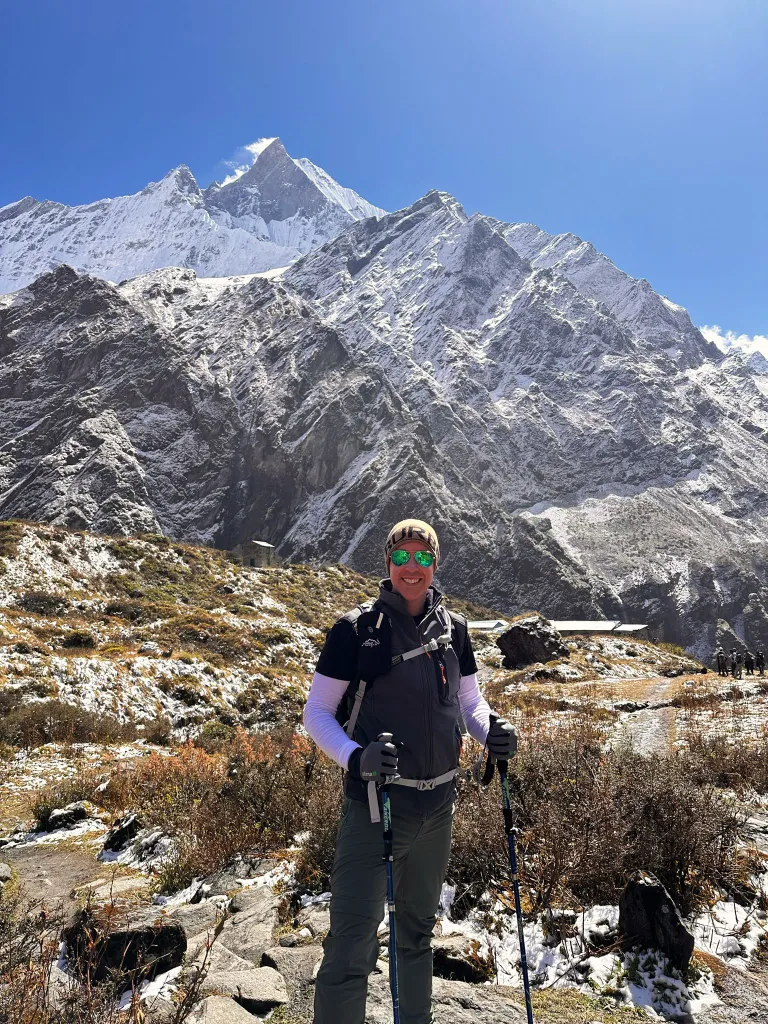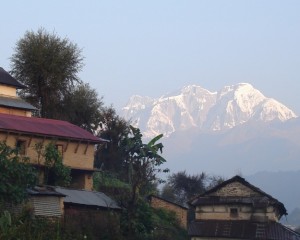Trekking in Nepal During the Off-Season: What to Expect
Trekking in Nepal has long been on the list of many trekkers and adventurers, drawn by the dream of immersing themselves in the towering peaks and remote corners of the Himalayas. Most people plan their journeys during the peak seasons, when the weather is comfortable and the skies are clear. But what if we told you there’s another side to Nepal, a side that only a few ever truly experience, the off-season?
The seasons of monsoon and winter bring a wilder, quieter, and more peaceful kind of adventure. Yes, the weather can sometimes be harsh, but not always. With a bit of preparation, it’s more than manageable. In return, you’ll find empty trails, landscapes bursting with life after the rains or shimmering under blankets of snow, and mountains that feel like they belong to you alone.
Plenty of hidden gems, like the Nar Phu Valley Trek and the Tsum Valley Trek, welcome those willing to embrace the magic of the off-season. Still wondering what to expect from these untamed trails? Let us take you on a short journey into a world that’s a little more raw, a little more personal, and filled with unexpected beauty. Trekking during Nepal’s off-season might be the adventure you’ve been waiting for.
Understanding the Off-Season in Nepal
Before planning your trek in the Wonderland region, it's essential to be aware of the monsoon and winter seasons, their weather patterns, challenges, and the rewards of unique experiences.
Monsoon (June–August): Rain and Lush Landscapes
After a brief farewell to the striking summer season, light rain and high humidity usher in warm, dull weather, with daily rainfall lasting for a few hours. The monsoon season is a bit tricky on most trails in Nepal as it can make the roads slippery because of the muddy trails. Yet, the transformation we can see is a lush green paradise that anyone who observes it will want to capture with their cameras.
However, the rain-shadow areas of Mustang and Dolpo remain drier even during the monsoon season, with little crowd. Therefore, those seeking a raw and solitary experience of the ancient and preserved culture and customs in the Himalayas can find it here. Still, you need to be ready as there might be travel delays and landslides caused by the rain.
Winter (December–February): Cold, Clear Skies, and Snow at Higher Altitudes
Just like the monsoon season, the winter season comes after the cold and vibrant breeze of autumn, bringing freezing temperatures and snow. While the days are clear and sunny with wonderful views of the majestic peaks, the nights are chilly, filled with stars.
Moreover, trekking at high altitudes can be harsh, as temperatures can drop below the freezing point. Walking on snowy trails in the heart of winter's magic sounds magical, but it is a challenge.
For trekkers, we might have good news: lower-altitude treks, like the Ghorepani Poon Hill trek and the Khopra Trek, are accessible. The best part is that fewer people will make the trails quieter and more peaceful.

Advantages of Off-Season Trekking
Before you plan any further, let's take a detailed overview of the advantages and challenges to help you make an informed decision before proceeding.
Peaceful Trails
The off-season trek is the time when you can experience the aura of natural and cultural gems along Nepal's famous trails in near solitude. With a bit fewer treks, you can fully immerse yourself in the natural beauty and serenity of the mountains without the crowds common during peak season.
Cost Savings
Since it is the off-season, there are fewer people so that you may be here for a surprise, as the cost of accommodation, guiding services, and transportation becomes more affordable due to lower demand. For an accessible and affordable trek, the time is the best as you can also find better availability and more personalized service at teahouses and lodges.
Enhanced Cultural Interaction
It is the time when there are multiple festivals lined up in the remote region of Nepal like Kumje, Dumje, Lhosar, and the list goes on. With fewer tourists around and local communities more accessible, you will have better opportunities for meaningful engagement, gaining deeper insight into the traditions, lifestyles, and daily activities of the people living in these remote areas.
Challenges of Off-Season Trekking
There are also numerous changes in the off-season trail path that every trekker should be aware of to create a more effective plan.
Unpredictable Weather Conditions
While the starting time of the season will have a predictable weather with comfortable temperature, at the peak of the season and the end might be a tough call as there are unpredictable changes like Monsoon months bring heavy rainfall, fog, and leech-infested trails. Winter brings sub-zero temperatures and the possibility of sudden snowstorms. Such conditions can be a big haul in your plan, thus requiring flexibility and a well-prepared mindset.
Limited Accommodation Options
There are some teahouses in the lower region that offer accommodation options. But in the higher altitude region, there is no option for accommodation because of the harsh weather, thus it requires for you to have careful route planning and early booking.
Challenging Trail Conditions
Trails can become hazardous, such as in winter, when ice and snow make paths slippery and difficult to navigate. Similarly, in monsoon, landslides, flooding, and muddy trails pose additional risks. You should monitor trail updates and remain flexible with their itineraries.
Essential Tips for Off-Season Trekking
- Select the appropriate region based on its weather patterns.
- Pack proper gear: waterproof clothing, insulated layers, and good boots.
- Hire an experienced guide for safety.
- Be flexible with your itinerary.
- Stay updated on trail and weather conditions.
Best Off-Season Treks in Nepal
Nepal offers a range of trekking options that remain accessible and enjoyable during the off-season, particularly in regions less affected by monsoon rains or winter snow. While specific trails may be challenging due to weather conditions, the following treks are recommended for their ability to provide a rewarding experience, even during the off-peak months.
For Monsoon:
- Upper Mustang
- Nar Phu Valley (Rain-shadow areas)
For Winter:
- Ghorepani Poon Hill
- Langtang Valley
- Everest Panorama Trek
Is Off-Season Trekking Right for You?
- Trekking Experience: Are you comfortable with a bit of extra adventure and ready to handle changing trail conditions?
- Fitness Level: Can you take on the challenges of cold weather, slippery trails, or longer walking hours?
- Travel Goals: Are you seeking peaceful trails, deep cultural connections, and unique, raw beauty that's free from the busy crowds?
If your heart says yes, then off-season trekking might be the perfect fit for you! Let Nepal Vision Trek turn your dream into reality.
With expert guidance, personalized planning, and a deep love for adventure, we’ll help you experience Nepal’s hidden magic—safely and memorably.
FAQS






